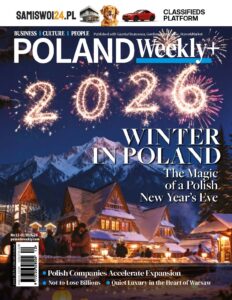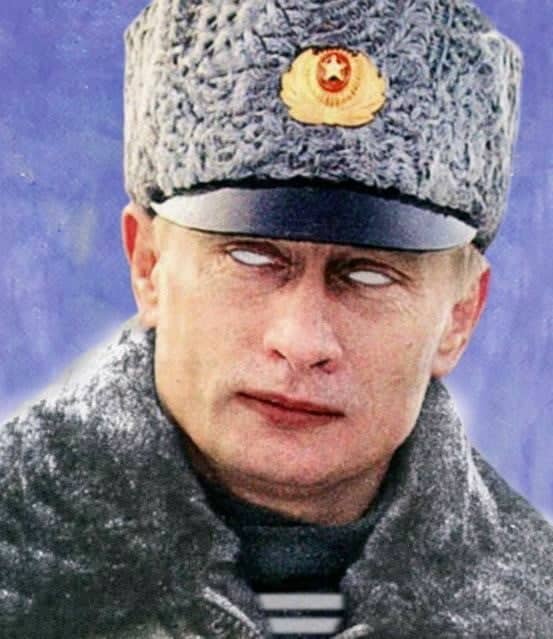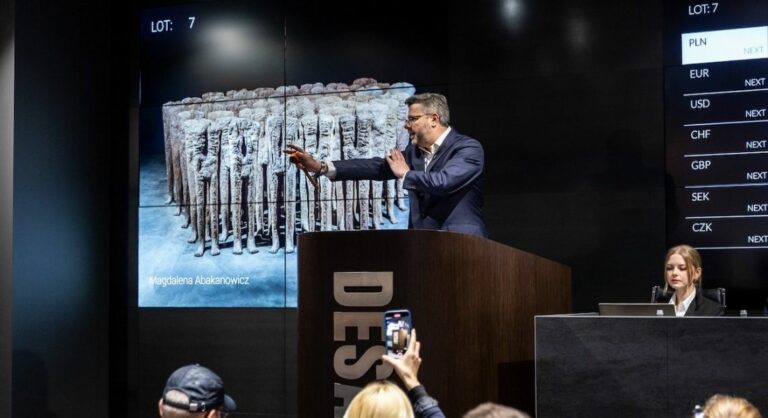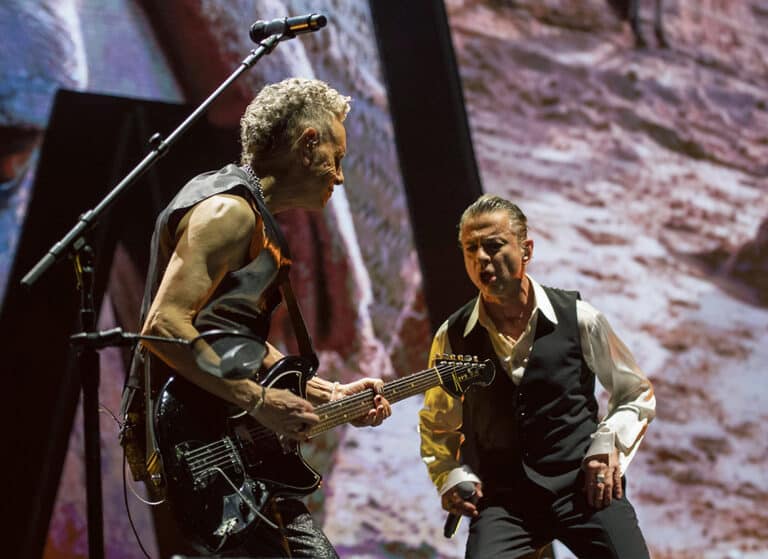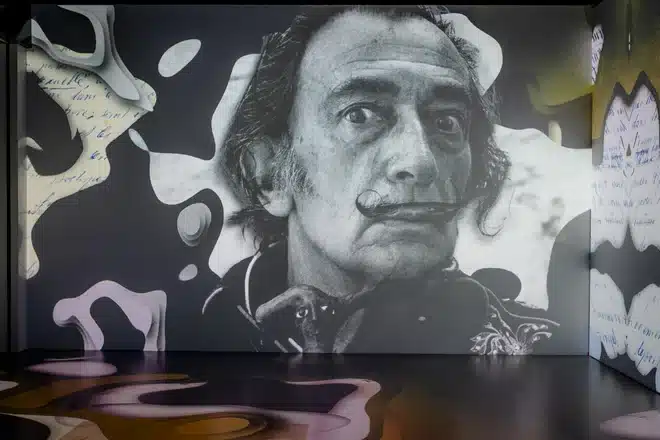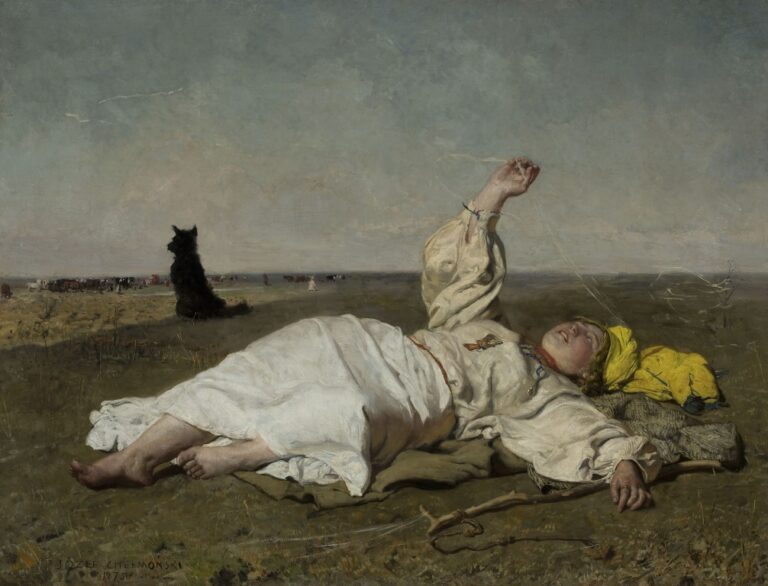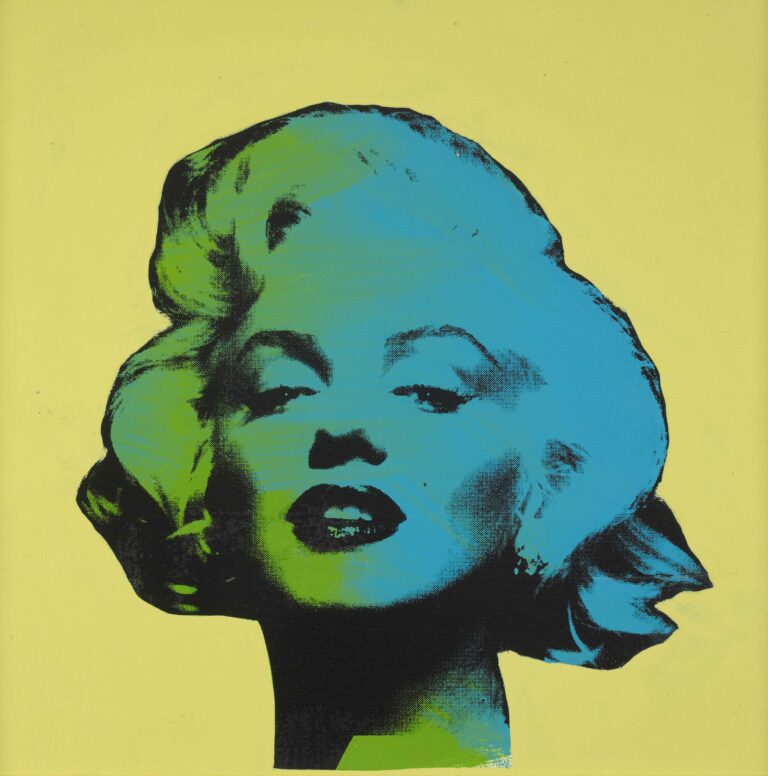Paweł Kowalewski, an artist who predicted the future
Art is a channel of contact between the past, present and future. It helps us to deal with essential matters for all human life and relate to our existence. By manifesting what is most important, art predicts what our future lives will bring. Artists often direct the future by seeing patterns before they even form and embedding them in their work so that later, in retrospect, these works can explode like a time bomb with a hidden message.
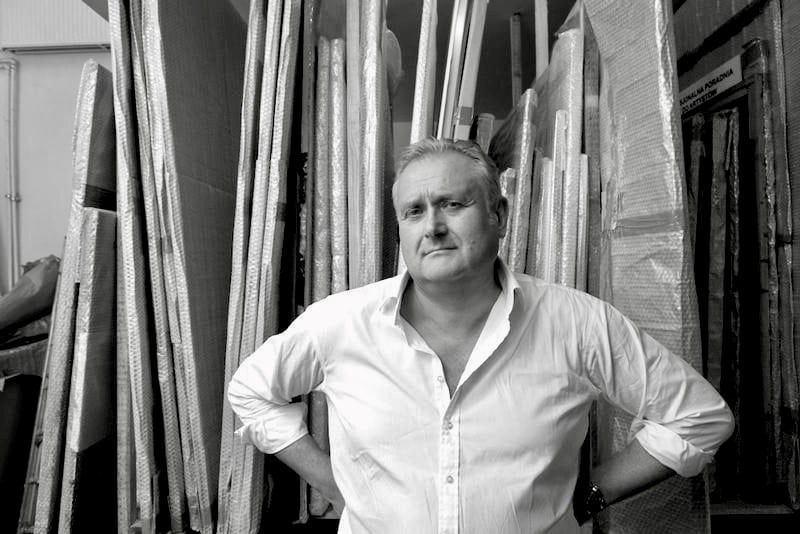
As one of the most respected Polish artists of our times, Paweł Kowalewski, claims: “Real art must be rebellious!” Twenty years ago, in an interview, he said: “When we think about the history of the 20th century, it hits us: God! How did it happen that all these “isms” arose and nobody reacted? Life went on. People were still walking, drinking beer, and going to the beach. Only somewhere in the background, on the wall, was a tiny portrait of Adolf Hitler. Something like this is being born again, and we are indifferent, smiling. Because it’s okay. We wonder what we might do. Exactly nothing. Today his words have become a grim reality.
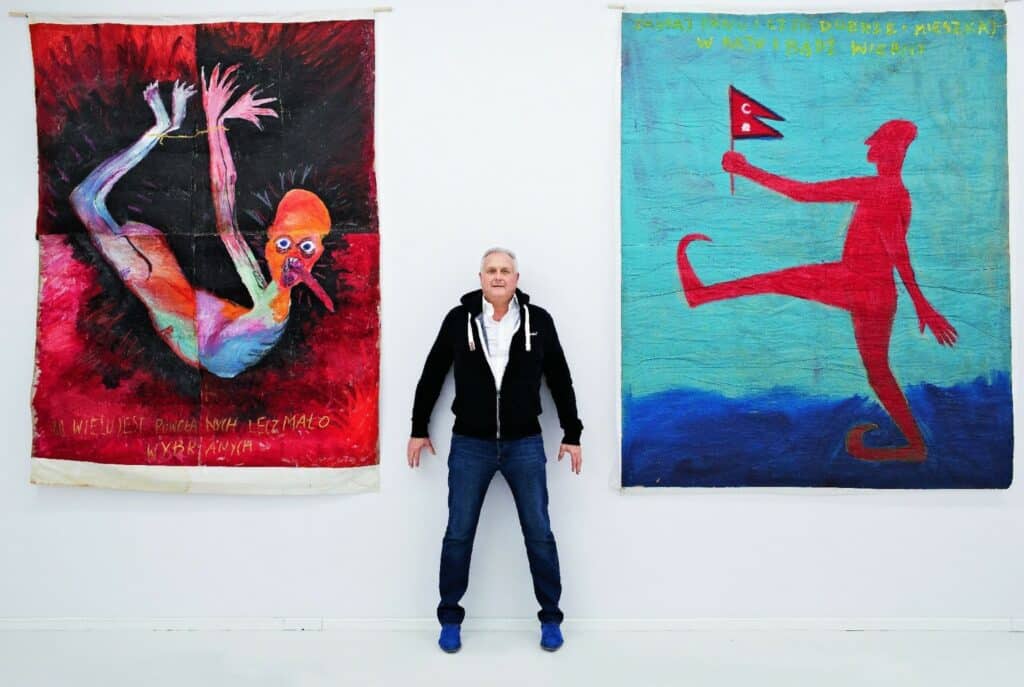
In December 2021, a painting by Paweł Kowalewski entitled “Why is there something rather than nothing?” which, completely destroyed in the flood in the 1990s, was converted into digital NFT and auctioned at the first auction of this type in Poland for over 100,000 euros. The colorful features of this work were part of one of the basic metaphysical challenges present within theology, philosophy, religion and cosmology, and contained in its title, the question posed by the author in 1986 – “Why is there anything at all?” .
Other works by Kowalewski, the legend of the Polish art scene of the 1980s and the co-founder of Gruppa, a rebel with the title of professor at the Academy of Fine Arts, also turned out to be disturbingly prophetic. When he created them, he was told he was exaggerating. Today, works such as “Simulator of Totalitarianism”, “Mon Cheri Bolsheviq 2005” or “Europeans Only ‘ take on new and “sinister meanings.” Kowalewski has often paid attention to the repetition of history and warned against repeating events that everyone had already hailed as unlikely in the present day.
In 1984, Paweł Kowalewski painted “Mon Cheri Bolsheviq” depicting a Soviet special forces soldier with a passionate, red mouth and dispassionate, cold eyes. In the work, the artist was referring to the text of the Polish philosopher and historian Marian Zdziechowski, born in 1861, who commented with astonishment on the joy and admiration of Parisians over the Bolshevik revolution in 1917-20. In Parisian bistros, toasts were literally raised to “Mon Cheri Bolscheviq”.
After the fall of communism, Kowalewski’s critical activity was continued in the form of subsequent works, which were the artist’s cynical commentary on the latest political and social events. At the vernissage of the famous and important exhibition entitled “Warsaw – Moscow 1900 – 2000” at the Zachęta – National Gallery of Art, the artist handed out postcards from “Mon Cheri Bolsheviq 2005”. The Russians looked at him as if he were crazy, because he unknowingly handed a postcard with Putin to the Minister of Culture and Art of the Russian Federation.
“Mon Cheri Bolsheviq 2005” is a paraphrase of the famous painting by Paweł Kowalewski from 1984. In the new version, the soldier with the red star turns into Vladimir Putin, who, like the pictorial predecessor, has painted lips. This is a cynical commentary on Russian seduction, first communism, then Putin’s imperialist Russia. The leader’s portrait is also struck by empty, cold eyes – although it’s obvious now, in 2005 no-one would want to believe that the Russian president would turn out to be the Hitler of the 21st century.
“Simulator of totalitarianism” is a project “locked” in a huge darkened cabin, inside which the viewer, after starting a multimedia projection, comes face to face with the dark heritage of 20th-century history. The installation refers to simulators of various types of human behavior known to everyone, such as: flight, frost or weightlessness. Images of annihilation, death, all the evil that takes place in the world every day, reach us through the same channels and in the same way as any other media message. The question – how do we react to it? Kowalewski puts us directly in front of the terrifying system. With a few-minute experiment that we go through in isolation in a closed cabin, the artist wants to awaken the awareness of unintentional, but still participation. The work was presented for the first time in 2012 at the Propaganda Gallery in Warsaw, as part of an individual exhibition dealing with the subject of the totalitarian paradigm, which, contrary to appearances, still shapes contemporary society.
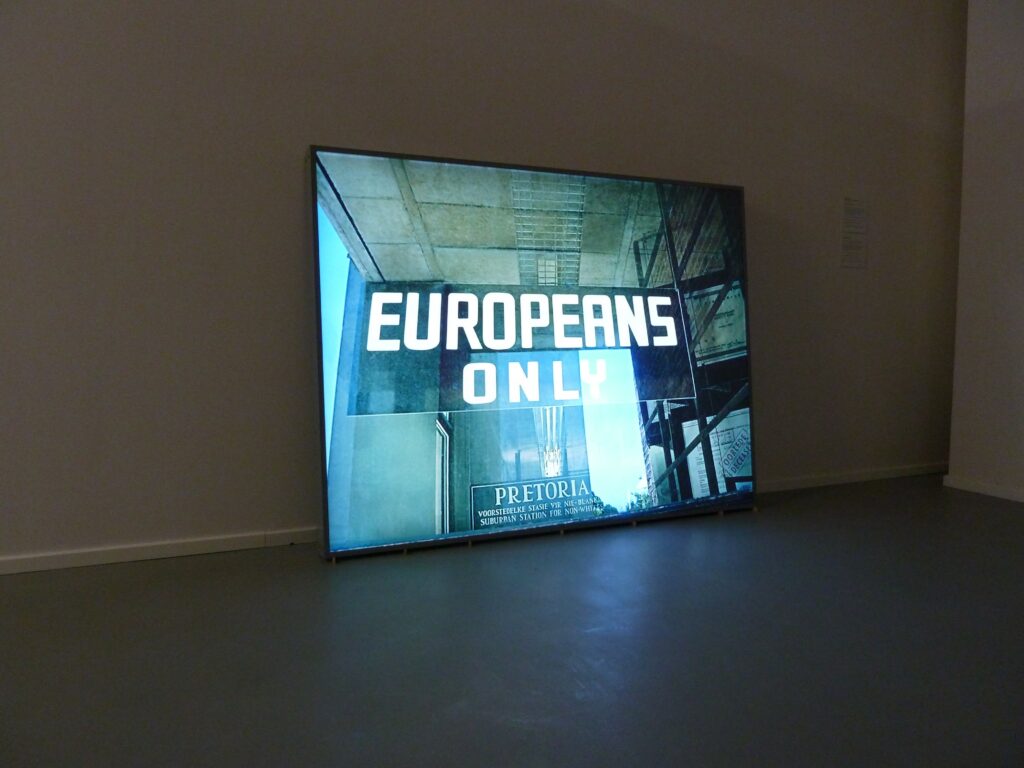
One of the works shows the “Europeans Only” plaque, part of the exhibition at the Apartheid Museum in Johannesburg in 2007. The preserved sign comes from the Pretoria apartheid station, together with the entire museum it is a kind of memento, a record of the era of totalitarian ideology based on racism, but also warning of the danger of her return. The capture of the plaque in the photograph was to perpetuate this warning.
It is also worth recalling here the series of disappearing images created by the artist. “Strength and beauty. A very subjective history of Polish mothers ”are large-format portraits of women living during World War II, including the portrait of the artist’s mother, who took part in the Warsaw Uprising. They were painted with a special paint that will fade with time, turning the portraits into abstract shadows. It is a commentary on the human tendency to forget, disrespect or even despise history, which the artist perceives as extremely dangerous.
Kowalewski said many years ago: “Contempt for history causes us to have more and more courage to do more and more stupid things […] I had such a cassant thought that when a generation that remembers the war passes away, everything will start all over again” .
On the other hand, “Golden Boy” is the screaming, screaming face of Vladimir Putin, covered with 24-carat gold, which was created in 2017 and today acquires a new, more sinister dimension. The sculpture is a commentary on many figures of dictators whose only ideology is money, and on their oversized ego covered in gold. Putin has become the best example of an absolute ruler: cruel and greedy, who does not pay attention to any rules and orders others how to live – a figure that constantly returns from, as it seems, ancient history. The faces of the dictators are ubiquitous stamps on reality, they force themselves into the manipulated media, the public sphere and private life of citizens, and, of course, into culture. They shout orders, wage wars, and put themselves on a golden pedestal. The face of the sculpted Putin, crooked by a wild cry, is not the face of a statue of a dignified ruler, it is an exposing of his interior.
In May last year one of the most important Polish art critics, the long-time director of Warsaw Zachęta and the initiator of the establishment and construction of the Museum of Modern Art in Warsaw, Anda Rottenberg, in her text for Kowalewski’s exhibition at the “WINDA” Contemporary Art Gallery, wrote: “He painted ugly,” like the whole Gruppa and like before, several dozen years earlier, Andrzej Wróblewski, who decided that final matters cannot be painted nicely. (…) Nice painting is easier. And, of course, better absorbed by the public. But is it necessary for an artist who wants to irritate the viewer? “
Kowalewski’s works were exhibited, among others, at MuseumJerke in Germany, Artist’s House in Tel Aviv, Tretiakowska Gallery in Moscow, IsyBrachot Gallery in Brussels, NSDOK in Munich, Dorotheum in Vienna, Sotheby’s in London, Zachęta – National Gallery of Art.
His works are in the largest Polish collections, incl. the National Museum in Warsaw, the National Museum in Krakow, Zachęta – the National Gallery of Art, the Jerke Museum, as well as the ING Polish Art Foundation and the Starak Family Foundation. Currently, at the MOCAK Contemporary Art Museum in Krakow, you can see the exhibition “Politics in Art” and in its collections two outstanding works by Paweł Kowalewski – “GOLDEN BOY – PUTIN” and “Europeans Only”.
The exhibition asks a question about the current relations of these two interconnected worlds – politics and art, which formerly served to strengthen power, and now serves to control and undermine it. Once upon a time, artists supported the power of political systems with their talents. Today they closely and critically observe politicians and are actively involved in opposition activities. Similar questions accompany the art of Paweł Kowalewski, who in the 1980s, together with Gruppa, was part of the artistic opposition, a creative rebellion against systemic oppression and the imposed rules; and today he continues to produce internationally acclaimed works that pose important questions and are often visionary and prophetic.
More about the artist: pawelkowalewski.pl
